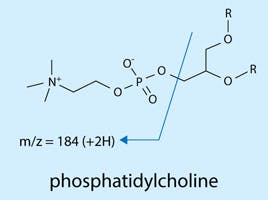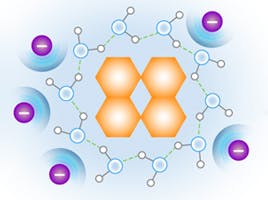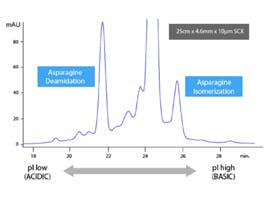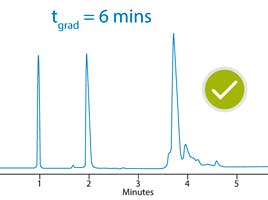
01 Nov 2017
Dedicated HPLC and GC columns for PAH analysis
Unsurpassed sensitivity and resolution for PAH analysis in a wide range of sample matrices.
Given that PAHs have limitless origins and are likely carcinogenic, many government agencies such as Occupational Safety and Health Administration (OSHA), National Institute of Occupational Safety and Health (NIOSH), and European Union’s Scientific Committee on Food have proposed or mandated exposure limits; thus, analytical methods including HPLC are being improved to monitor PAHs.
- High retention, outstanding recovery, and excellent reproducibility
- High sorbent robustness / excellent flow characteristics
- Compatibility with most organic solvents and aqueous solutions pH 0 to 14
- Improved detection limits with reduced sorbent volumes
- No residual silanol groups which can affect the recovery of basic compounds
All SampliQ polymer phases exhibit different mixed mode behavior allowing you to develop simple generic methods even if your target analytes vary between acids, bases and neutrals.
Typical PAH Structures
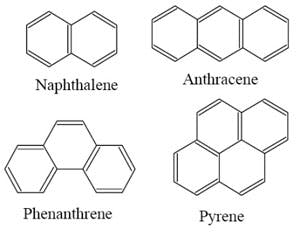
The broad range of PAH sample matrices (air, water, soil, and food) and the large number of PAHs (over 100 compounds) requires different analytical techniques. HPLC methods are useful for PAH analysis because UV and fluorescence detection offers enhanced selectivity by UV and fluorescence spectra over other techniques such as GC with flame ionization detection. Fortunately, many PAH HPLC methods can be developed with Agilent Technologies Eclipse PAH columns because of the numerous column dimensions and excellent scalability, reproducibility, and longevity. The most dominant example of PAHs has been the 16 separated in the EPA 610 method. But for food and environmental analysis, both subsets of this set and additional PAHs may need to be separated. Eclipse PAH columns separate all of the 16 PAHS in EPA method 610 quickly with high resolution and have been shown to resolve up to 24 PAHs in a single analysis.
Separation of 24 PAH compounds - according to the Quebec Ministry of Environment Conditions
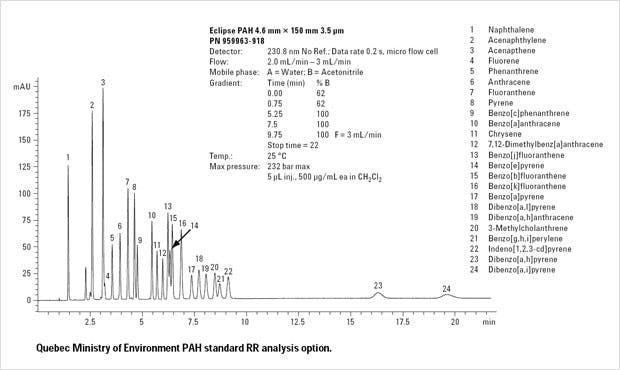
The Eclipse PAH column is a polymerically bonded C18 column - type of bonding is needed for the separation of the geometric isomers in many PAH samples and provides critical selectivity for other separations, like carotenoids, steroids and PCBs.
Eclipse PAH columns are available in 1.8, 3.5 and 5 µm particle sizes for the optimum column for your LC or LC/MS instrument. The Rapid Resolution HT (RRHT) 1.8 µm columns provide the fastest analysis times and the highest resolution and support high pressure use with the new Rapid Resolution LC (RRLC). The Rapid Resolution 3.5 or 5 µm columns are an ideal choice for standard instruments or with only UV and fluorescence detectors.
There are now also GC solutions for PAH analysis thanks to Agilent’s Technologies Ultra Inert GC technology which uses new testing procedures to more effectively evaluate GC column inertness performance. This new testing procedure employs deliberately aggressive probes such as 1-propionic acid, 4-picoline, and trimethyl phosphate to verify each column's inertness performance.
Separation of 16 PAH compounds - using a 30m DB-5 MS Ultra Inert GC column
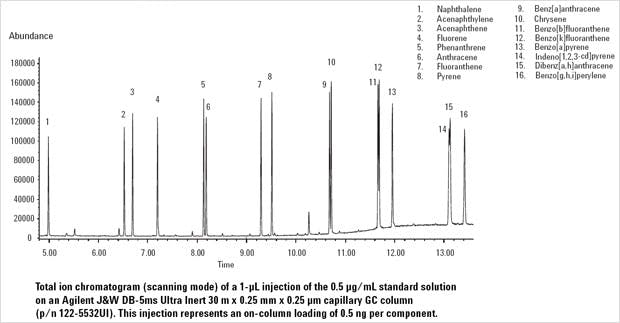
Trace- and ultra trace-level polycyclic aromatic hydrocarbon (PAH) analyses are possible using the J&W DB-5 MS Ultra Inert Column with electron impact single quadrupole scanning mass spectrometry. In these challenging separations, PAHs tend to adsorb onto active sites or cold spots within a given chromatographic system, which can lead to false negative analytical results. Ultra Inert GC capillary columns, whose inertness performance has been verified, mean that column activity as a potential source of result uncertainty has been all but eliminated.


